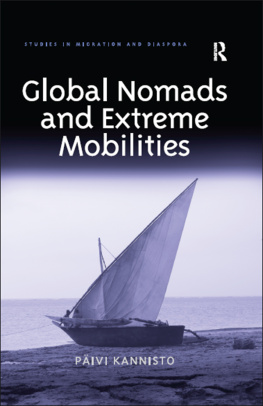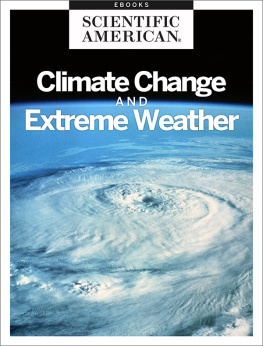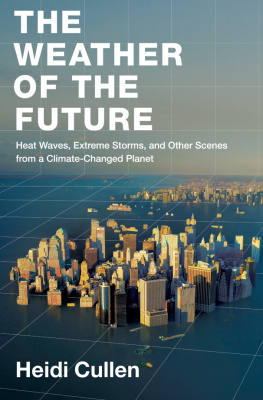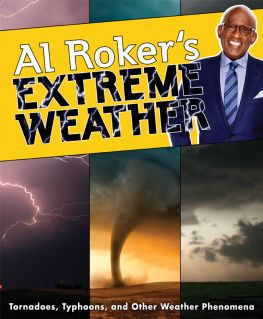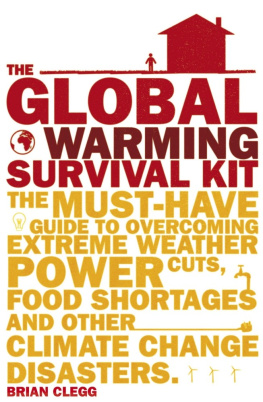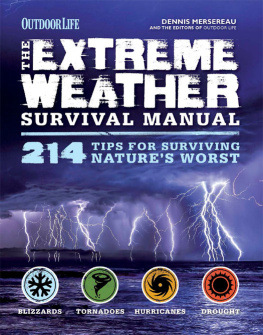
Extreme Weather and Global Media
In the two decades bracketing the turn of the millennium, large-scale weather disasters have been inevitably constructed as media events. As such, they challenge the meaning of concepts such as identity and citizenship for both locally affected populations and widespread spectator communities. This timely collection pinpoints the features of an often overlooked yet rapidly expanding category of global media and analyzes both its forms and functions. Specifically, contributors argue that the intense promotion and consumption of extreme weather events take up the slack for the public conversations society is not having about the environment, and the feeling of powerlessness that accompanies the realization that anthropogenic climate change has now reached a point of no return. This volume incorporates a range of case studies of extreme weather mediation in India, the UK, Germany, Sweden, the US, and Japan, and explores recent and ongoing disasters such as Superstorm Sandy, the Fukushima nuclear crisis, flooding in Germany, and heat waves in the UK. Extreme Weather and Global Media generates valuable inquiry into the representational and social characteristics of the new culture of extreme weather.
Julia Leyda is Associate Professor in the Department of English Literature at Sophia University in Tokyo. She has published articles in Jump Cut, Television and New Media, American Quarterly, and Cinema Journal. She is the editor of Todd Haynes: Interviews (University Press of Mississippi, 2014).
Diane Negra is Professor of Film Studies and Screen Culture and Head of Film Studies at University College Dublin. She is the author, editor, or coeditor of eight books, the most recent of which is Gendering the Recession: Media and Culture in an Age of Austerity (Duke University Press, 2014). She is coeditor of Television and New Media.
First published 2015
by Routledge
711 Third Avenue, New York, NY 10017
and by Routledge
2 Park Square, Milton Park, Abingdon, Oxon OX14 4RN
Routledge is an imprint of the Taylor & Francis Group, an informa business
2015 Taylor & Francis
The right of the editors to be identified as the authors of the editorial material, and of the authors for their individual chapters, has been asserted in accordance with sections 77 and 78 of the Copyright, Designs and Patents Act 1988.
All rights reserved. No part of this book may be reprinted or reproduced or utilized in any form or by any electronic, mechanical, or other means, now known or hereafter invented, including photocopying and recording, or in any information storage or retrieval system, without permission in writing from the publishers.
Trademark notice: Product or corporate names may be trademarks or registered trademarks, and are used only for identification and explanation without intent to infringe.
Library of Congress Cataloging-in-Publication Data
Extreme weather and global media / edited by Julia Leyda and
Diane Negra.
pages cm
Includes bibliographical references and index.
1. Climatic extremes in mass media. 2. Storms in mass media.
3. Television weathercastingSocial aspects. I. Leyda, Julia, editor.
II. Negra, Diane, 1966 editor.
P96.C59E97 2015
070.44955163dc23
2014049577
ISBN: 978-1-138-79878-6 (hbk)
ISBN: 978-1-138-79879-3 (pbk)
ISBN: 978-1-315-75648-6 (ebk)
Typeset in Bembo
by Apex CoVantage, LLC
Contents
Julia Leyda and Diane Negra
Jon Kraszewski
Justin Carville
Susanne Leikam
Paula Gilligan
Annika Olsson
Max Liboiron
Sujata Moorti
Laura Beltz Imaoka
The editors would like to thank Sharae Deckard, Sinead Hogan, Su Holmes, Karen Jackman, Vicky Johnson, Suzanne Leonard, Harvey OBrien, Stephen Shapiro, Christopher Shore, Renata Sukaityte and her colleagues at Vilnius University, Graeme Turner, and Mark Tynan. Anthony McIntyre has been an enormous help in finalizing the manuscript.
Fellowship support from the Japan Society for the Promotion of Science and funding from Sophia University were critical in furthering the conversations and reflections that grew into this book, and we gratefully acknowledge that support here. We also thank those who were in the audience for panels based on this books research presented at the 2014 Society for Cinema and Media Studies Conference and the 2014 Annual Conference of the German Association for American Studies.
Warm thanks to Erica Wetter, Simon Jacobs, and Gareth Toye at Routledge.
Julia Leyda and Diane Negra
Folks are certainly a whole lot more engaged with the weather than they used to be.
James Franklin, Branch Chief of the National Hurricane Centers Hurricane Specialist Unit
In the two decades bracketing the turn of the millennium, large-scale weather disasters have been inevitably constructed as media events. As such, they challenge the meaning of concepts such as identity and citizenship for both locally affected populations and widespread spectator communities. This is especially true given the emergence of transnational, convergent media environments that employ highly standardized breaking news and follow-up reporting protocols and in light of the millennial dispersion and normalization of notions of the risk society, to use Ulrich Becks term. It particularly pertains to the representation of extreme weather in televisual form, including news coverage, preparedness programming, and catastrophe reenactment (the two latter modes have proliferated in recent years while the former has been elaborated and centralized).
One of the chief reasons we are concerned with representations of extreme weather in this volume is that we understand weather as the ultimate phatic discourse. Arguably, like air travel and health care, it constitutes a supercharged site in which everyday economies of value are exposed in sharp relief. The capacity of extreme weather events to operate as points of entry into public affective cultures and to lay bare the precarities of twenty-first-century capitalism is a critical thread unifying the chapters in this collection. Analysis of the media forms associated with extreme weather particularly illuminates the degree to which the twin tendencies to present disasters as spectacle and as occasions for neoliberal exhortations to personal responsibility have become inextricably imbricated.
Many of the chapters in this volume illustrate how extreme weather texts comply with conservative gender, class, and race regimes. A number also elucidate how they play a key role in privileging certain kinds of impacted populations over others when disasters strike. It is our contention that media coverage of extreme weather events and their aftermaths is customarily shaped so as to arouse but also strictly control spectatorial modes of compassion and pleasure. We proceed here mindful of the complexities of both compassion and detachment as they are summoned and provoked by media representations of weather disaster. As Lauren Berlant astutely argues, compassionate feelings derive from social training, emerge at historical moments, are shaped by aesthetic conventions, and take place in scenes that are anxious, volatile, surprising, and contradictory.
Conventional representations of extreme weather events may offer platforms for the display of social care while fortifying economic and social hierarchies. In this respect, William Easterly sounds an aptly cautionary note in observing that [w]e must not let caring about the material suffering of the poor change the subject from caring about the rights of the poor. In his analysis of Detroit ruin photography, John Patrick Leary argues that it



